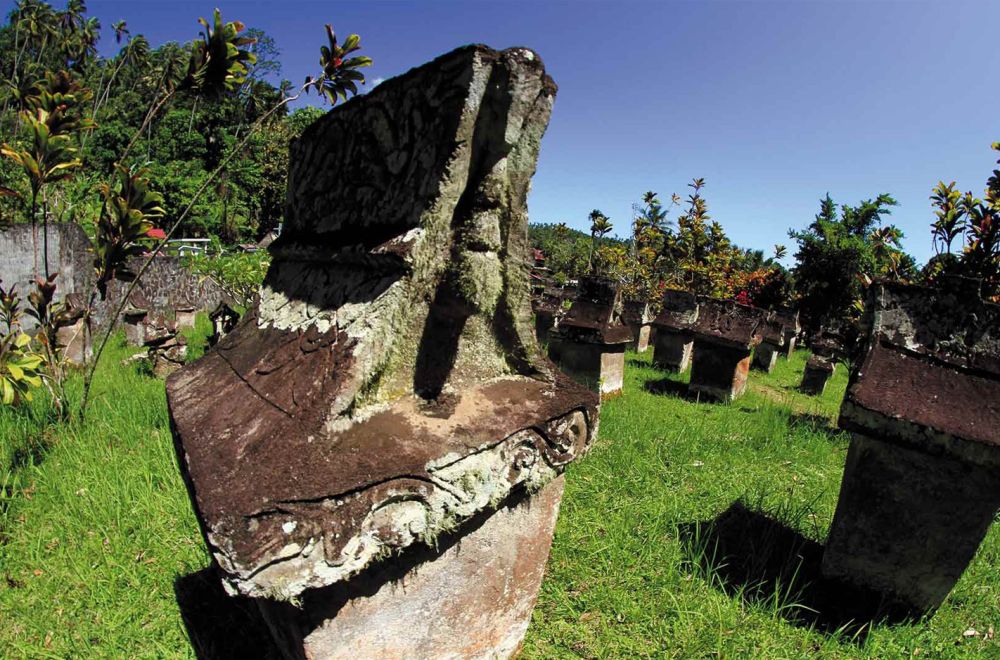

The Waruga Ancient Tombs are an integral part of the history and cultural tapestry of Manado, located in the North Sulawest province of Indonesia. These stone sarcophagi, which date back to the Megalithic era, give visitors a unique insight into the funeral rituals and practices of the indigenous Minahasan people.
The allure of the Waruga ancient tombs for tourism has its roots in the region's rich cultural heritage. Originally intended as a resting place for the nobility and their families, the Waruga tombs have long intrigued scholars and tourists alike. The history of these ancient mortuary practices has been brought to light through the hard work of anthropologists and historians, transforming the Waruga site into an important destination for cultural and historical tourism in Indonesia.
Each Waruga tomb is made from a single piece of stone and uniquely decorated with intricate carvings that reflect the social status and occupation of the deceased. As a historical marker, these tombs also reflect shifting burial practices: the Dutch colonial government, concerned with hygiene, decreed in the 19th century that the Minahasan people should adopt western burial methods, leading to the abandonment of Waruga burials in 1865.
In contemporary times, the Waruga Ancient Tombs have attracted international tourists seeking to explore this tangible aspect of Indonesia's diverse history. Efforts have been made to preserve the site, with the area now featuring structured paths, information boards, and local guides available to share the stories and significances behind each tomb.
In aligning with the trends of sustainable and educational tourism, the Waruga site presents an opportunity for travelers who are looking to engage with authentic cultural experiences. Tourism now promotes local engagement and conservation efforts, ensuring the site's preservation for future generations. Additionally, with the rise of social media, more tourists are now sharing their experiences at the Waruga Tombs online, thus contributing to the site's international recognition.
Despite its potential, tourism at the Waruga Tombs faces ongoing challenges such as the need for better site management and investments in infrastructure to receive a growing number of visitors. Moving forward, there is a push for responsible tourism that balances public interest with the protection and respect for these ancient memorials, ensuring that the Waruga tombs can continue to educate and inspire for generations to come.